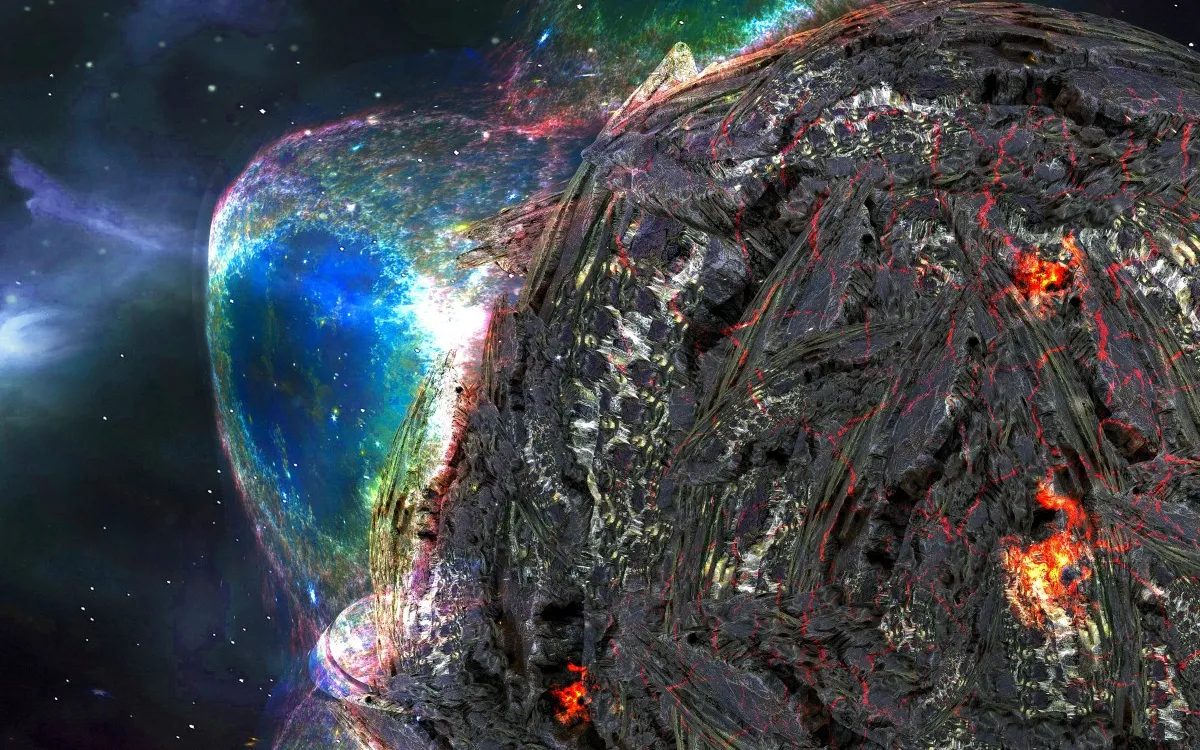
Recent rumors circulating on social media have sparked widespread concern about a massive comet, known as 3I/ATLAS, allegedly on a collision course with Earth. This speculation has led to discussions about potential threats to humanity and how this celestial body might be diverted. Some users have even reported military movements and international coordination to tackle the impending comet, further fueling the alarm. But what is the truth behind these claims?
The rumors gained momentum following a sensational article published by the New York Post on September 29. The headline read: “‘Massive’ comet hurtling toward us is larger than previously thought, could be alien tech, scientist says: ‘It could change everything for us.’” This article was widely shared on platforms like X (formerly Twitter), with users posting screenshots to validate their fears. One account, Steven Greenstreet, provocatively stated, “Scientists say a massive alien spaceship is hurtling towards Earth. Why aren’t more people talking about this?”
Another user, Dr Disclosure, amplified the narrative by referencing a meeting of US military leaders chaired by Defense Secretary Pete Hegseth on September 30, adding, “This is why all the generals are gathering!” This post alone garnered over half a million views, showcasing the viral nature of the comet rumors. Meanwhile, Richard Roeper expressed anxiety over the comet's speed, stating, “A massive comet is reportedly hurtling toward Earth at 130,000 mph! Can we stop it?” He claimed there were two missions underway to address the situation.
As the rumors spread, some users began speculating that the comet might not be a comet at all but rather an alien spacecraft. An account named Lord Bebo circulated false statements attributed to renowned physicist Michio Kaku, claiming that the object was on a reconnaissance mission with potentially hostile intentions. This post, featuring an edited screenshot of a previous interview, racked up over 290,000 views. Similarly, another account, Astronomy Vibes, suggested that while most scientists view it as a strange comet, a few assert it could be an engineered probe from another civilization, although no evidence was provided.
In response to the rampant speculation, Al Jazeera’s fact-checking agency, SANAD, investigated the claims surrounding Comet 3I/ATLAS. The comet, detected by NASA’s ATLAS telescope on July 1, 2025, poses no threat to Earth. NASA describes it as having “a teardrop-shaped cocoon of dust coming off its solid, icy nucleus” and confirmed that the closest approach to Earth occurred on July 21, at a distance of approximately 270 million kilometers (167.8 million miles).
The European Space Agency (ESA) corroborated NASA's findings, clarifying that the comet's closest distance was more than 2.5 times the distance between Earth and the Sun. According to NASA, Comet 3I/ATLAS will reach its closest approach to the Sun on October 30, 2025, at about 210 million kilometers (130.5 million miles) from the Sun, just within the orbit of Mars.
Despite the fears, Comet 3I/ATLAS represents a significant opportunity for scientific research. The Hubble Space Telescope has reported that the comet is traveling at an astonishing 210,000 kilometers per hour (130,500 miles per hour), making it the fastest recorded visitor to our solar system. NASA emphasized that Hubble’s ongoing observations allow astronomers to more accurately estimate the size of the comet’s nucleus, which is thought to range from 1,444ft (440 meters) to a maximum of 3.5 miles (5.6 km) in diameter.
As for the quotes attributed to Michio Kaku, SANAD found no credible evidence to support these statements. The circulating image of Kaku was taken from an interview with Nation News on February 20, 2025, well before the discovery of Comet 3I/ATLAS.
In summary, while the rumors regarding Comet 3I/ATLAS have generated significant buzz on social media, they are largely unfounded. Experts from NASA and ESA have confirmed that this interstellar object poses no threat to Earth. Instead, it offers an exciting opportunity for scientists to study a rare visitor to our solar system.